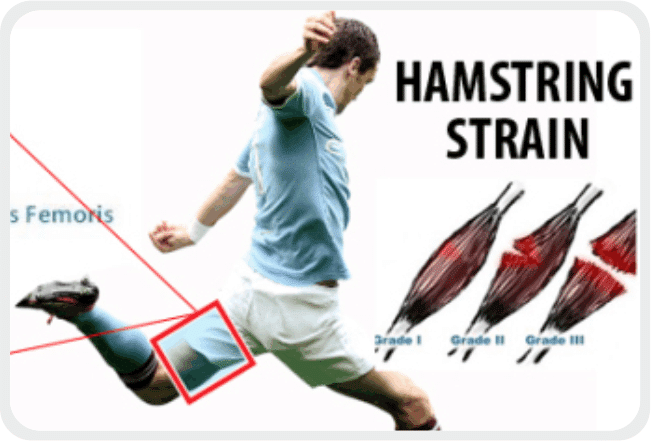
Hamstrings Strains
Hamstring is a group of four muscles at the back of the thigh, namely; Bicep Femoris, Semitendinosus, Semimembranosus and Hamstring part of the Adductor Magnus. Hamstring muscles span across the knee and cause knee flexion and they also extend to the hip and contribute to hip extension.
Lack of coordinated movement between the two joints may leave a runner prone to injury within this muscle group. Most of the hamstring injuries are a result of posterior kinetic chain or hip extensor dysfunction. According to studies, hamstrings are active throughout 60% of a runner’s gait cycle.
Hamstring Injuries – Causative Factors:
The most common cause of running injuries is training errors. These could be flaws in duration, frequency, and intensity of training. Anatomical and biomechanical factors also contribute to it. Hamstrings injuries generally occur due to inadequate warm-up and fatigue, accompanied by a lack of adequate flexibility and strength imbalance.
Apart from the above, other associated factors that can result in hamstring injuries are:
● Poor biomechanics of running and daily ergonomics
● Muscle imbalance
● Chronic back pain issues
● Overuse of or high hamstring tendinopathy
MOI:
Short-inadequate glute strength/activation can lead to increased load on the hamstring muscle group, leading to injury over time. Working speed and a sudden increase in running are also common risk factors.
Sign and symptoms :
● Sudden onset of pain in the posterior thigh during running or sprinting
● Pain starts on heel strike and persists to toeing off
● A mild tightness or strain along with pain, during running occur
● In moderate to severe strain, a person is unable to walk properly due to pain
Management at AktivHealth :
At AktivHealth, we focus on reducing the pain and associated symptoms. We work on a specific exercise regime, as required according to the condition and severity of the injury. All this is followed by modifying the biomechanics of running and incorporating sports specific drills






